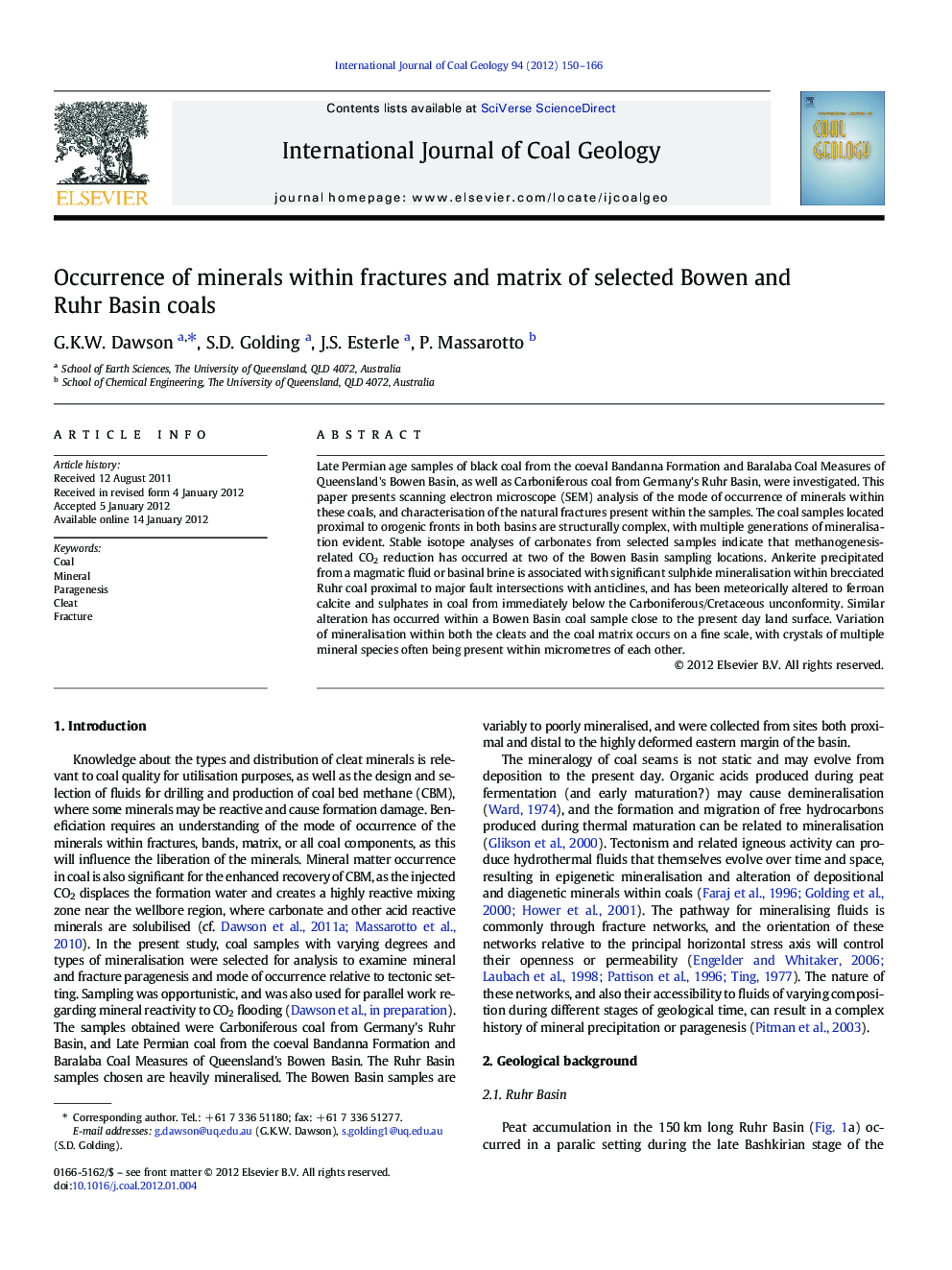| Article ID | Journal | Published Year | Pages | File Type |
|---|---|---|---|---|
| 1753650 | International Journal of Coal Geology | 2012 | 17 Pages |
Late Permian age samples of black coal from the coeval Bandanna Formation and Baralaba Coal Measures of Queensland's Bowen Basin, as well as Carboniferous coal from Germany's Ruhr Basin, were investigated. This paper presents scanning electron microscope (SEM) analysis of the mode of occurrence of minerals within these coals, and characterisation of the natural fractures present within the samples. The coal samples located proximal to orogenic fronts in both basins are structurally complex, with multiple generations of mineralisation evident. Stable isotope analyses of carbonates from selected samples indicate that methanogenesis-related CO2 reduction has occurred at two of the Bowen Basin sampling locations. Ankerite precipitated from a magmatic fluid or basinal brine is associated with significant sulphide mineralisation within brecciated Ruhr coal proximal to major fault intersections with anticlines, and has been meteorically altered to ferroan calcite and sulphates in coal from immediately below the Carboniferous/Cretaceous unconformity. Similar alteration has occurred within a Bowen Basin coal sample close to the present day land surface. Variation of mineralisation within both the cleats and the coal matrix occurs on a fine scale, with crystals of multiple mineral species often being present within micrometres of each other.
► Ruhr ankerite precipitated from magmatic fluid or evolved brine. ► Vein sulphide mineralisation concentrated in fault brecciated coal. ► Methanogenesis stable isotope signature in selected Bowen carbonates. ► Multiple mineralisation events evident in Bowen and Ruhr coals. ► Weathering style alteration near unconformity surface.
